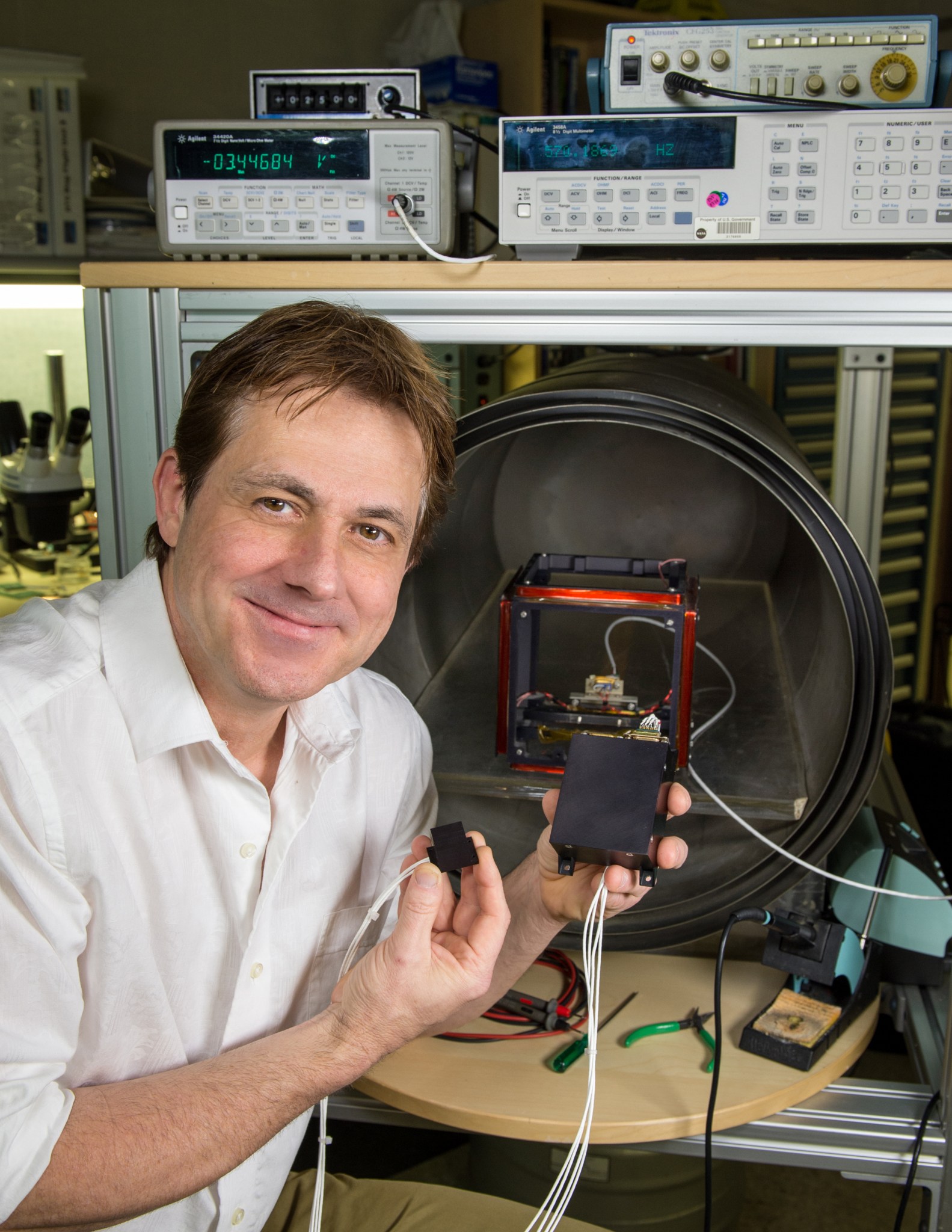A miniaturized fluxgate magnetometer that helped stop NASA’s Dellingr spacecraft from a potentially mission-ending spin has secured a flight aboard a Brazilian CubeSat mission — NASA’s first with the South American nation — and is now undergoing a significant upgrade that would benefit both space- and ground-based data collection.
The miniaturized fluxgate magnetometer, developed by instrument engineer Todd Bonalsky at NASA’s Goddard Space Flight Center in Greenbelt, Maryland, proved that scientists could reduce the size of these powerful instruments and gather scientifically useful magnetic-field measurements from small platforms sometimes no larger than a shoebox.
The instrument made its debut as one of two magnetometers aboard the Dellingr mission, created at Goddard to improve the reliability and resiliency of CubeSat platforms.
Shortly after its launch in 2017, the Dellingr spacecraft began to spin, crippling communication and preventing one of the mission’s miniaturized mass spectrometers from collecting usable data. To slow down the tumbling, mission controllers wrote and uploaded new software and used Bonalsky’s miniaturized fluxgate magnetometer as an attitude sensor to provide the data needed to activate Dellingr’s torquers and help stabilize the spinning. Dellingr is now collecting useful data.
The same instrument has also flown on a couple sounding rocket missions and will gather data on Brazil’s Scintillation Prediction Observations Research Task, or SPORT, mission expected to launch in 2020. The objective of this joint NASA partnership with the Brazilian National Institute for Space Research is understanding the conditions in Earth’s ionosphere that lead to scintillation, which can compromise GPS and other transmissions from low-Earth orbit.
New and Improved Version
Perhaps more exciting, though, are efforts to develop a self-calibrating, miniaturized magnetometer, which could fly on CubeSats and sounding rockets, but also as a ground-based instrument for NASA’s first-ever effort to use high-voltage power lines as a super-scale antenna for gathering measurements about geomagnetically induced currents.
“A self-calibrating fluxgate magnetometer would be very valuable to us,” said Antti Pulkkinen, the Goddard scientist spearheading the power-grid study. “We could put them in the ground and literally walk away without worrying about whether they are properly calibrated. They would do it themselves,” Bonalsky added. “Such a technology would be highly beneficial to further improve our GIC observations — I want to put them in the field!”
With funding from Goddard’s FY19 IRAD program, Bonalsky is continuing an effort he began two years ago to combine the flight-proven miniaturized fluxgate magnetometer with an optically pumped atomic magnetometer.
The need for an all-in-one instrument lies in the inherent advantages and disadvantages of both magnetometer types, Bonalsky said. “Our miniaturized fluxgate system, which has been so successful on Dellingr and other flight programs, is prone to drift over long periods of time due to wide and repeated temperature variations.”
That’s why Bonalsky wants to add an atomic magnetometer, which operates under different principles. These types aren’t prone to drift and can be used to maintain the fluxgate’s calibration. However, they’re no panacea, either. While not susceptible to drifting, atomic magnetometers can only measure the magnetic field’s magnitude, not its direction.
Bonalsky said he’s making good progress marrying the two types to create a first-ever miniaturized hybrid, which he believes he could fly as early as next year on a suborbital mission. “If it weren’t for IRAD, we would have never achieved this level of miniaturization and all these flight opportunities,” he said.
For more Goddard technology news, go to: https://www.nasa.gov/wp-content/uploads/2019/06/spring_2019_final_web_version.pdf?emrc=188e7d
By Lori Keesey
NASA’s Goddard Space Flight Center



























